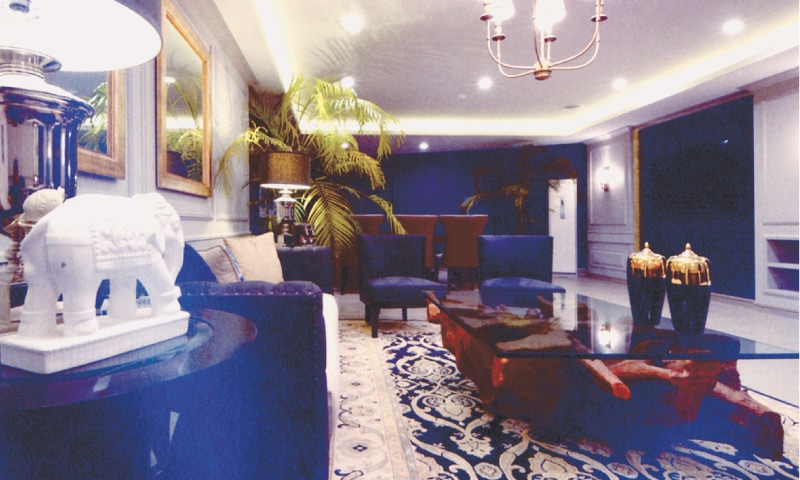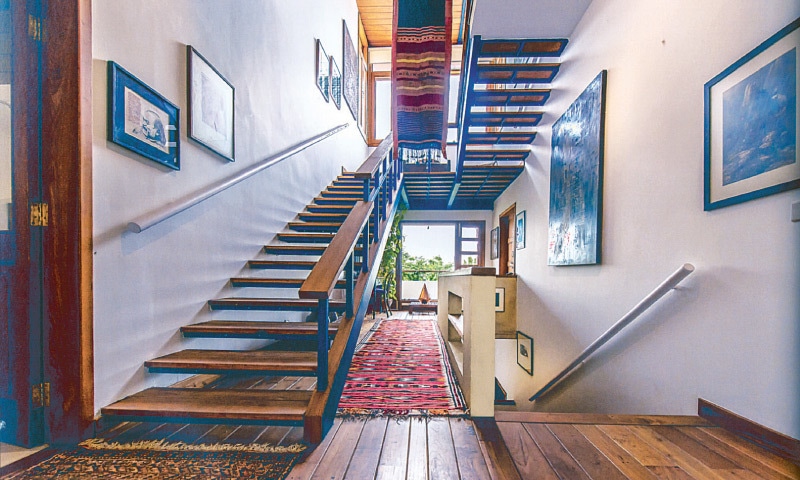For centuries, interior decoration was the hobby of gifted amateurs — ladies of leisure, fastidious houseowners and under-occupied dilettantes. The mantra was simple: have space, will decorate. Two world wars, changes in patterns of domestic living, devolved income patterns in the hands of the emerging middle classes and the evolution of a new species of niche professionals changed all that.
Suddenly, it was not enough to talk airily about interior decoration. One had to be specific. There is a difference between interior decoration and interior design, asserts Naheed Mashooqullah, president of the Pakistan Institute of Interior Designers (PIID), in her introduction both to the subject and to a sumptuous volume, Interior Design of Pakistan — I, brought out by the PIID some time ago. “Interior design is still thought to be synonymous with interior decoration,” she says in gentle remonstrance. “The reality is quite different. It takes many years of university training and extensive working experience to develop skills required to be an interior designer. One has to be exposed to electrical and mechanical systems, structural implications, spatial connections and much more. In addition to all the engineering, there is the knowledge of materials and finishes, furnishings, accessories and a well-rounded knowledge of art and architecture.” The live element is the touch that only a human mind can provide: “A good interior designer will take all these ingredients and add a touch of magic by making spaces memorable.”
As any self-respecting chef will tell you, simply assembling and mixing ingredients is not enough. Like a well-baked cake, “a good interior is more than the sum of its parts,” James Soane adds in his magisterial foreword. He obviously belongs to the tradition that produced the likes of Edwin Lutyens who (with William Baker) designed New Delhi, and Le Corbusier who designed Chandigarh. “Architects seem to have forgotten that they too designed interiors to be lived in rather than just be photographed! I always like to remind people that the famous Modernist architect Le Corbusier was happy designing entire cities as well as choosing carpets, curtains and painting walls pink.”
Interior decoration is to architecture what nacre is to an oyster: within an outer shell lies the pearl.
Lutyens designed everything in his showpiece — the Viceroy’s House (now the Rashtrapati Bhavan): the grand durbar hall, the reception areas, the gardens, the fountains, the bathrooms, even the children’s bedroom. His attention to detail was nothing less than microscopic. An extreme example was the hanging lamps in the nursery that had white shades like shells protecting egg-shaped light bulbs.
A post-Independence generation of Indians inherited an almost unlimited cultural tradition. By comparison, Pakistan’s design evolution could not have been slower. It took more than 50 years for interior design to be given corporate recognition, and rather like other professional guilds such as the Bar Associations or the Institute of Chartered Accountants, it followed British models. Danish Zuby, a founder-member of the PIID, narrates his experience in establishing it: “I thought it was an easy task, not aware of the rough road ahead. The phase between 1998 and 2001 was the most difficult and crucial. Getting committed designers to meet over a cup of tea for PIID was quite a task.”
After three years of dogged effort, in 2001, PIID was officially recognised and its birth announced in the press. In 2010, the PIID moved up one notch — it became part of the National Design Council.

Every new cult has a father figure. In the case of interior design, it was the architect Shahid Abdulla. In her prologue, Maria Aslam pays tribute to “his experimental works, immense aesthetic sense parallel to a controlled economic of materiality and inventive approaches towards found objects and local materials.” She adds admiringly: “This architect is a school of interior design.” In doing so she echoes Lockwood Kipling’s effusive adulation of the bejewelled mosque built by Wazir Khan in Lahore’s inner city as “a university of design.”
Interior design is not just a new genre. It has sprouted its own vocabulary. Words have been coined that force one to seek the help of a bulky dictionary: “materiality,” “ideation,” and “interiority.” It takes time for the average reader to digest a sentence as technical as this one: “Hence interior design is practiced in two norms — in some projects it is a cosmetic treatment applied to create flattering aesthetics to appease your clientele, but more so the conscious pragmatic designer demonstrates a greater depth of interior design with a direct response to context, a holistic approach towards conceptual skills with a deeper connection of art, architecture and interior design.” And if that does not have you searching in the yellow pages for an interior designer closer to you — at least in vocabulary — nothing will.

Perhaps the most lucid chapter in the book is that contributed by the architect Akeel Bilgrami, a co-founder of PIID. In it, he describes the evolution of interior design in Pakistan from the hospitality sector (hotels, restaurants, etc) to the offices of competitive airline companies, followed by the denationalisation of banks in the 1980s. Old banks sought new names, logos and colour branding. The most recent, and perhaps the most prolific, areas of growth have been in the sudden explosion of professionally designed retail outlets.

Not surprisingly, this book is structured to cover the gamut of interior design projects. They cover six categories: residential, retail, office, leisure, hospitality and institutional. Their inclusion was determined by a jury. There were no prizes, for in their very selection they were deemed to be the best. Each of them is a winner. An introductory chapter by different specialists — some professional, others determined amateurs — sets the scene for each category. This is followed by exquisitely shot photographs of various successful interior design projects.
If one was to cavil about this heavy tome, it would be on two counts. The first is that what the reader sees is the finished project, shown at its best advantage. One is shown the final output, not the process through which it was painstakingly created, its gradual conversion from a grain of sand into a translucent pearl. The second is, as one contributor himself points out, “ironically none of the photographs feature people,” even though “without clients, there is no project.”
In today’s digital age, the screen is the limit. Thanks to globalisation, everything is available and therefore possible. Designers are not constrained to begin and end with ethnic localisation. Aslam puts it succinctly: “The vast growth of interior design is in direct relation to the extensive material palette available from any part of the world and the digital solutions that have pervaded soft furnishings, upholstery, accessories, glass and flooring options in the country.”
Look at any of the photographs in this book and one could be anywhere in the world. Walk into a well-designed interior in any shop in any of Pakistan’s major cities, and one would be entering a shining futuristic universe transplanted seamlessly into Pakistan.
It is a tribute to Pakistan’s interior designers that by enhancing and promoting their skills, they have elevated standards of living, eating, shopping, and even banking throughout our country. Interior Design of Pakistan explains why and how. This is the first volume in what will hopefully be a continuing series. It is a pioneering, timely tribute to a younger, more vibrant Pakistan that puts design above despair, innovation before imitation and colourful creativity before dull convention.
The reviewer is an art historian
Interior Design of Pakistan — I
By Maria Aslam
Pakistan Institute of Interior Designers
243pp.
Published in Dawn, Books & Authors, May 7th, 2017















































Dear visitor, the comments section is undergoing an overhaul and will return soon.